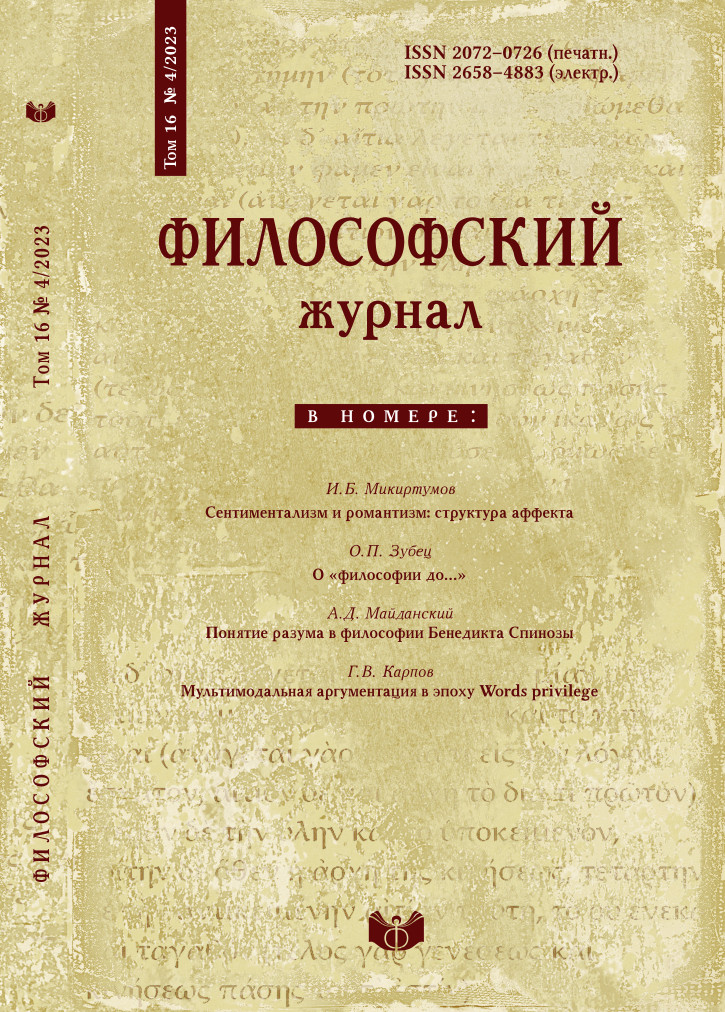Multi-modal argumentation in the era of words privilege
DOI:
https://doi.org/10.21146/2072-0726-2023-16-4-180-196Keywords:
argument structure, visual argumentation, argument evaluation, pragma-dialectics, dialogue approachAbstract
The article investigates the problem of the existence of the so-called multi-modal arguments – persuasive structures, where, along with written or spoken words, there are non-verbal elements that also perform persuasive functions. Such arguments are considered neither to be fully translatable into words, nor not to be total aliens in the argumentation studies. Along with the problem of translating the non-verbal component of a multi-modal argument, the question of their functional status in the structure of the argument is also discussed. It is proposed to consider such elements as premises, the connection of which with the conclusion is explained through the description of the mode (whether it is an action, an image or a recorded audio message) in which their propositional content is actualized. It is argued that the mode of the actualization of propositional content of the argument is no less significant than the content itself. On the basis of this claim it is proposed to consider “classical” textual arguments as a form of multi-modal arguments.






